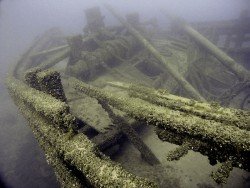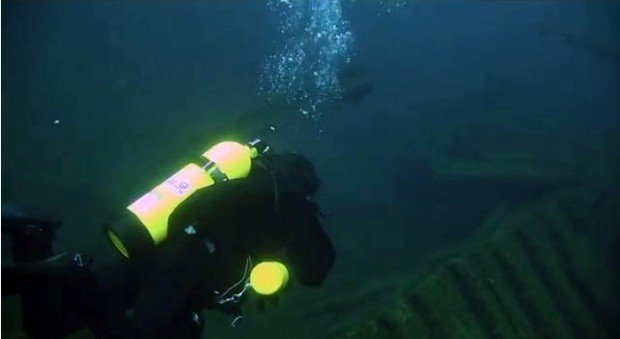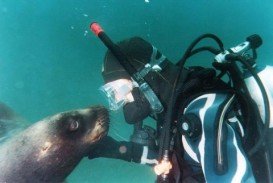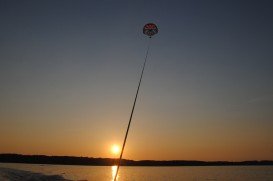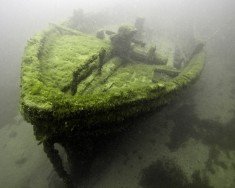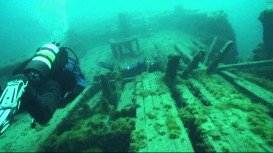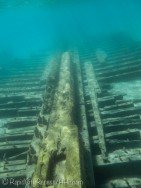Lake Michigan, the second largest of the Great Lakes of North America by volume and the third largest by surface area, is actually the only one located entirely within the United States. With its basin conjoining with that of Lake Huron to the east and having the same surface elevation, Lake Michigan and Lake Huron are technically a single lake. The large size of the Lakes and the fact that they are prone to sudden and harsh storms increases the risk of water travel and has led hundreds of ships to their end.
The rocky shoals and shallows, combined with the storms that enter the narrow Straits of Mackinac make the area dangerous to navigate. Over the years, a large number of ships have submerged in the Straits, many of them have yet to be discovered. The Straits of Mackinac Underwater Preserve lies at the northern tip of Lakes Michigan and Huron and tries to preserve Michigan’s shipwrecks for later generations. One of the shipwrecks that has been found is The Cayuga.
The Cayuga was a Steel Propeller Steamer built in 1889 at Cleveland, Ohio. Six years later (May 10, 1895), she was carrying grain and general merchandise when she encountered heavy fog. Unfortunately, the much smaller, wooden-made Joseph L. Hurd struck her on her starboard bow and led her to sinking 25 minutes later. From 1896 to 1899 , unsuccessful efforts were made to raise her, leaving large pontoons and other salvage equipment at the wreck site. You can still see a flat barge, which was lost in the salvage effort, sitting off her port bow.
Although she is gradually decaying and her bow is beginning to collapse, her stern is relatively intact and allows some penetration, while many details of her construction are present along with some hardware. The Cayuga lies southwest of Straits of Mackinac and because of the distance, you should make advanced arrangements, if you desire to dive this site.
